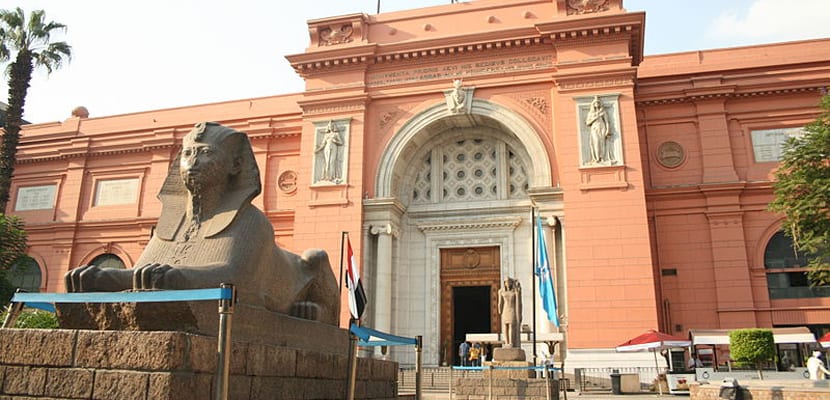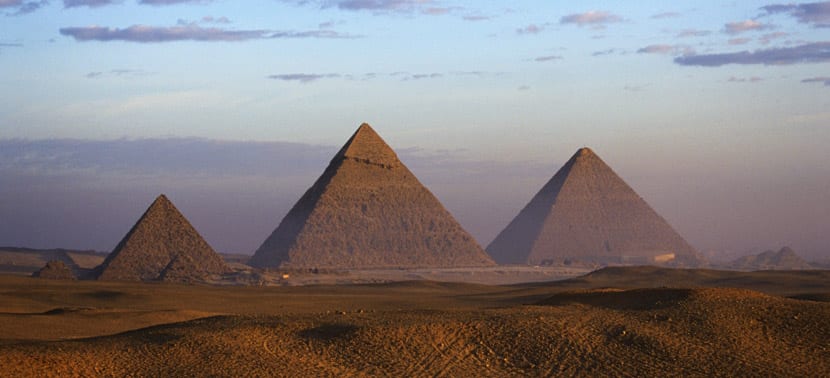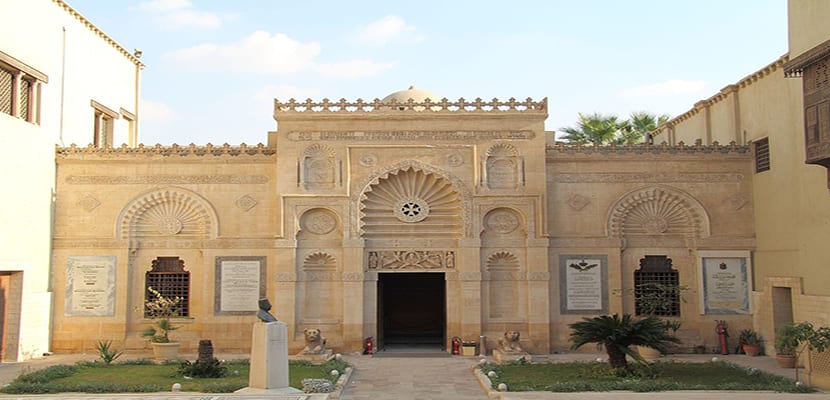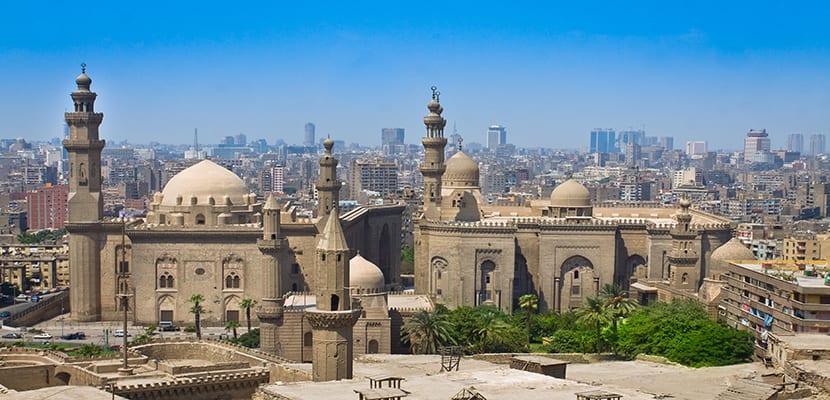
Cairo is one of the most populated cities in the world with almost 17 million residents. Nicknamed 'the mother of the world' and 'the victorious one', it is the gateway to the country of the pharaohs and the undisputed capital of the Arab world.
This excessive city where the new and the old coexist perfectly, is one of those cities that does not admit middle ground and never leaves anyone indifferent. There are so many wonders in it that tourists can be overwhelmed if they do not plan in advance the places they are going to visit.
On the occasion of the upcoming opening of the Great Egyptian Museum in 2018, we walk the streets of Cairo to let ourselves be carried away by the mystery and magic of this North African capital.
Downtown Cairo
Walking through the streets of downtown we can find shops and beautiful colonial buildings that speak of the splendor prior to the 1952 revolution.
We can start the tour by visiting La Ciudadela, a medieval Islamic fortification built on the Mokkattam hill. Its defenses were raised in the 85th century to stop the Crusaders and for a time it was the seat of government. Many of the reforms that were carried out are due to Saladino el Grande, as is the case with the XNUMX-meter-deep spring that can be seen today.
Later the Turks built a mosque and other buildings that currently contain four museums: the Egyptian Military Museum, the Egyptian Police Museum, the Carriage Museum and the Al-Gawhara Palace Museum.

Before the Grand Egyptian Museum opens in 2018, visiting the Egyptian Museum in Tahrir Square is an unavoidable activity. It has the largest collection of Egyptian antiquities on the planet with more than 120.000 pieces, although not all of them are exhibited for reasons of space.
Another very interesting place to visit is the Christian quarter of Cairo. Copts represent between 10% and 15% of the Egyptian population. It can be reached by metro and you have to get off at the Mari Girgis station. On leaving we will find the ruins of a Roman wall and several churches dating from the XNUMXth to the Middle Ages. Some of the best known are the Hanging Church, San Sergio, Santa Bárbara or San Jorge.
Surrounded by churches we will find the Ben Ezra synagogue, which looks like one more Christian temple since it was formerly a Coptic parish. Unable to pay taxes, a wealthy Jew bought it and turned it into a synagogue.
We finish this religious route in Islamic Cairo, in the neighborhood of El Azhar or El Ghouri. This is a kind of museum of Muslim culture in the open air. In it we can find the Ibn Tulun Mosque, from the XNUMXth century AD, and the Gayer-Anderson museum built in the house of an old Ottoman merchant from the XNUMXth century.
Next to the Islamic neighborhood is the El Azhar park, built on a part of the "city of the dead" that has beautiful panoramic views and where you can have a picnic on the shores of a lake in this hot city where it hardly rains a couple of days a year.
Nothing better than to end this visit to the center of Cairo than to drop by two pastry shops that are an institution in the heart of Egypt: El Abd (25, Tal'at Harb), with typical Egyptian sweets, and Groppi (Tal ' at Harb Square), with more European-style products.
More tourist attractions to see in Cairo
Pyramids of Giza

Located 18 kilometers from Cairo on the Giza Plateau, the Pyramids of Giza are one of the oldest monuments in the world. Its construction began around 2.500 BC, the largest and most famous being that of Cheops (140 meters high by 230 meters base). They are followed by those of Khafre and Menkaure.
Contrary to what many think, these pyramids were not built by slaves but by well-organized and paid squads of workers, as various excavations have shown.
On the visit to the Giza plateau you can take the opportunity to take a camel ride, with the advantage that prices have currently been fixed and it will not be necessary to haggle.
Coptic Museum

Located inside an ancient Babylonian Roman fortress, the Coptic Museum is one of the most interesting tourist attractions in Cairo as it displays art from the Christian era between 300 and 1000 AD.
The Coptic Museum was founded in 1910 and has around 16.000 pieces exhibited in 12 different sections and in chronological order. Among them are fabrics, papyri with texts from the Gospels, ivory and carved wood, etc.
Manial Palace
To the north of the Island of Rodah is the Manial Palace, which was the residence of Prince Mohamed Ali Tawfiq at the beginning of the XNUMXth century.
This palace has a mixture of Persian, Syrian and Moroccan styles, which are reflected in the five buildings that make up the palace. The prince's goal was to pay tribute to Islamic arts.
The palace gardens are made up of plants from various corners of the planet and very delicately distributed on the ground.
Mosque- Madrasa of Sultan Hassan

The mosque-madrasa of Sultan Hassan was built between 1356 and 1363, being one of the best examples of the Mamluk style in Cairo. It is considered the finest piece of architecture from the beginning of this period made with huge blocks of stone.
When crossing the entrance, you must go through a passage that leads to a courtyard surrounded by imposing walls and four rooms where Sunni Islam is taught. Other places in the mosque-madrasa that are worth visiting are the room of the sultan's mausoleum and the cloister with a mosaic floor, whose design is spectacular.